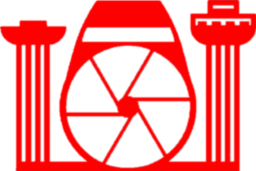It was 1953 to mark its birth: on 7 May 1953 the non-profit Cultural Photographic Association Cinefotoclub of Brescia began its activity, with registered office at no. 20 of Corso Zanardelli. The first President is Eng. Annibale Lori, the Vice President Prof. Francesco Mandruzzato and the Secretary Mario Benetti.
It is important to remember that in the same 1953 the international debut took place at the Italian Photographic Exhibition held in Belgium. The response in prestigious newspapers such as "L'informateur", "Le Soir", "La Libre Belgique" was remarkable: in fact, praise was not spared.
After the birth of the Club in 1953, the activity then continued in the national artistic photography of 1954 and 1957 in which authors such as De Biasi, Berengo Gardin, Giacomelli and Roiter appeared for the first time and subsequently in 1959 with the Color Festival Italo-French-Austrian, organized on the occasion of the centenary of the battle of San Martino and Solferino, in the presence of the heads of state Giovanni Gronchi for Italy and Charles De Gaulle for France). Then come the prestigious international trophies such as the Gold Anchor, the Italian Grand Prix (conquered in front of the Chicago and New York Slide Club) and the awards at the International Exhibition of Barcelona and that of Buenos Aires.
The Vittoria Alata Trophy is organized by the Cinefotoclub Brescia Museum five times in the years 1968/1974, together with the 14th Fiaf National Congress. In 1992 the Museum promoted and organized the "Gran Prix Europe" for the then twelve EEC countries.
The Museum is mentioned in the most important photographic antiques guides in the world, especially in the "Cameras" by Mc Keown (USA) and in the volumes on the Lombard Museums published by the Lombardy Region.

In 2001 the Municipality of Brescia adopted the "Progetto Carmine" recovery plan aimed at the redevelopment of this part of the historic centre; this project also involved the current headquarters of the Museum in the contrada del Carmine n.2; it is an ancient building, of which we have the first news from the Napoleonic Land Registry of the 19th century, even if the structure is much older, as the Superintendence found a terracotta floor from the 1400s.

 IT
IT  DE
DE  EN
EN 
